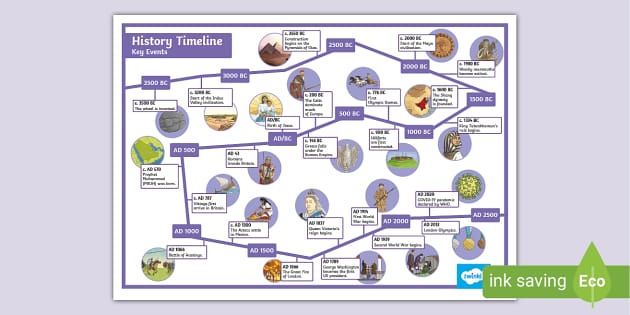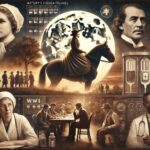Timeline of Truth: Key Events in History and What Actually Occurred
Introduction: Recasting the Past with Wiser Eyes
History has been written by the winners—but what if we were able to look back at the key events of our history with a more truthful eye? What if we explored more deeply, challenged the myths, and lifted the veil on what actually occurred?
In this timeline of truth, we’ll walk through some of the world’s biggest historical moments—from ancient empires to modern revolutions—and uncover the facts that textbooks sometimes skip over. Spoiler alert: It’s going to get real.
Timeline of Truth
Timeline of Truth
Table of Contents
1. The Fall of Rome – More Than Just Barbarian Invasions
When: 476 AD
The Textbook Version: Rome collapsed due to invasions by Germanic tribes.
The Reality: Rome’s collapse was not a rapid process. It was a gradual downfall due to economic instability, political corruption, overexpansion, and power struggles within. The so-called “barbarians” were frequently incorporated into Roman civilization and at times were part of its military.
⚔️ 2. The Crusades – Not Just Holy Wars
When: 1096–1291
The Textbook Version: Christian Europe initiated a series of holy wars to reclaim the Holy Land.
The Truth: Religion was involved, but greed, politics, and power were also key. Greed, prestige, or land promised several crusaders their motivation. The brutality wasn’t all on one side either—Christians and Muslims did equally terrible things.
3. The “Discovery” of America – Columbus Didn’t Discover It First
When: 1492
The Textbook Version: Christopher Columbus discovered America.
The Truth: Indigenous peoples had been living in the Americas for thousands of years. Columbus didn’t even set foot on what is now the U.S. mainland. Plus, Norse explorer Leif Erikson had already landed in Newfoundland around 500 years earlier.
4. The American Revolution – Freedom, But Not for Everyone
When: 1775–1783
The Textbook Version: The colonies fought Britain for independence and won.
The Truth: True—but remember that women, Native Americans, and enslaved Africans were not part of the freedom debate. Many struggled for independence, but were not given the rights it was said to assure.
5. The Industrial Revolution – Innovation at a Human Cost
When: 1760–1840
The Textbook Version: A golden age of invention and productivity.
The Truth: It changed technology and business, but with enormous social and environmental expense. Child labor, substandard working conditions, and urban poverty were rampant. The rich became richer and the working class suffered in silence.
6. The Signing of the Declaration of Independence – A Landmark with Hypocrisy
When: July 4, 1776
The Textbook Version: America issued its declaration of independence with ideals of liberty that were mighty.
The Reality: The document taught that “all men are created equal,” but some of its signers actually owned slaves. It was a groundbreaking step in the direction of freedom, but one filled with contradictions.
7. The Transatlantic Slave Trade – An Engine of Darkness Wealth
When: 16th–19th century
The Textbook Version: Frequently glossed over or sanitized in tone.
The Reality: This violent commerce enslaved more than 12 million Africans, denying them their freedom, identity, and lives. It laid the foundations of modern capitalism and global empires—but at a cost too human to bear.
8. The Scramble for Africa – Colonization Disguised as Civilization
When: 1880s–1914
The Textbook Version: European powers introduced civilization to Africa.
The Truth: What really went down was brutal colonization, theft of resources, and erasure of cultures. Borders were redrawn with no consultation from local people, causing long-term conflict and economic issues that still face the continent to this day.
9. World War I – Not the “War to End All Wars”
When: 1914–1918
The Textbook Version: A world war brought about by the assassination of Archduke Ferdinand.
The Reality: That was merely the trigger. The blaze had already been lit by imperial competition, arms buildup, and patriotic pride. Millions perished for what amounted to largely a struggle over power and control, rather than for high ideals.
10. Hiroshima and Nagasaki – Putting an End to WWII, but at What Cost?
When: August 1945
The Textbook Account: The U.S. dropped atomic bombs to bring Japan to surrender.
The Reality: Japan was virtually ready to surrender. The bombings killed more than 200,000 people, the majority of whom were civilians. Some historians contend that the decision was partly intended as a message to the Soviet Union, marking the beginning of the Cold War.
11. The Moon Landing – A Race Won, But at a Huge Price Tag
When: 1969
The Truth: True, but don’t forget the billions of dollars spent, the deaths in fruitless missions, and the propaganda component. It wasn’t all about exploration—it was also about Cold War global supremacy.
12. The Civil Rights Movement – More Than Martin Luther King Jr.
When: 1950s–1960s
The Textbook Version: MLK organized non-violent demonstrations that put an end to segregation.
The Truth: MLK was necessary, but so were thousands more—Malcolm X, Rosa Parks, the Black Panthers, student activists, and ordinary people who got beat up and jailed. The struggle wasn’t clean or simple—it was courageous, gritty, and persistent.
Learning what actually did happen in history isn’t about dismantling old notions—it’s about constructing better, truer ones. When we get closer to the truth, we don’t simply learn facts—we learn from errors, honor true heroes, and push towards a future that doesn’t relive the darkest moments of our past.
History is not all about dates and wars. It’s about people, decisions, power, and consequences. And it’s never too late to see things with clearer eyes.
❓ FAQs
Q1: Why are there varying accounts of events in history?
Because history tends to be written from one particular perspective—particularly that of the victors or the authorities.
Q2: How can I discover more about secret truths in history?
Read from varied sources, such as independent historians, documentaries, and non-Western accounts.
Q3: Are textbooks inaccurate?
Not entirely, but they tend to oversimplify or whitewash events for teaching purposes.
Q4: What’s the danger of ignoring historical truth?
We’re in danger of repeating the same errors or perpetuating unjust systems without challenge.
Q5: Can history ever be fully objective?
Most likely not. But through aiming for multiple perspectives, we’re closer to a more complete, honest picture.


